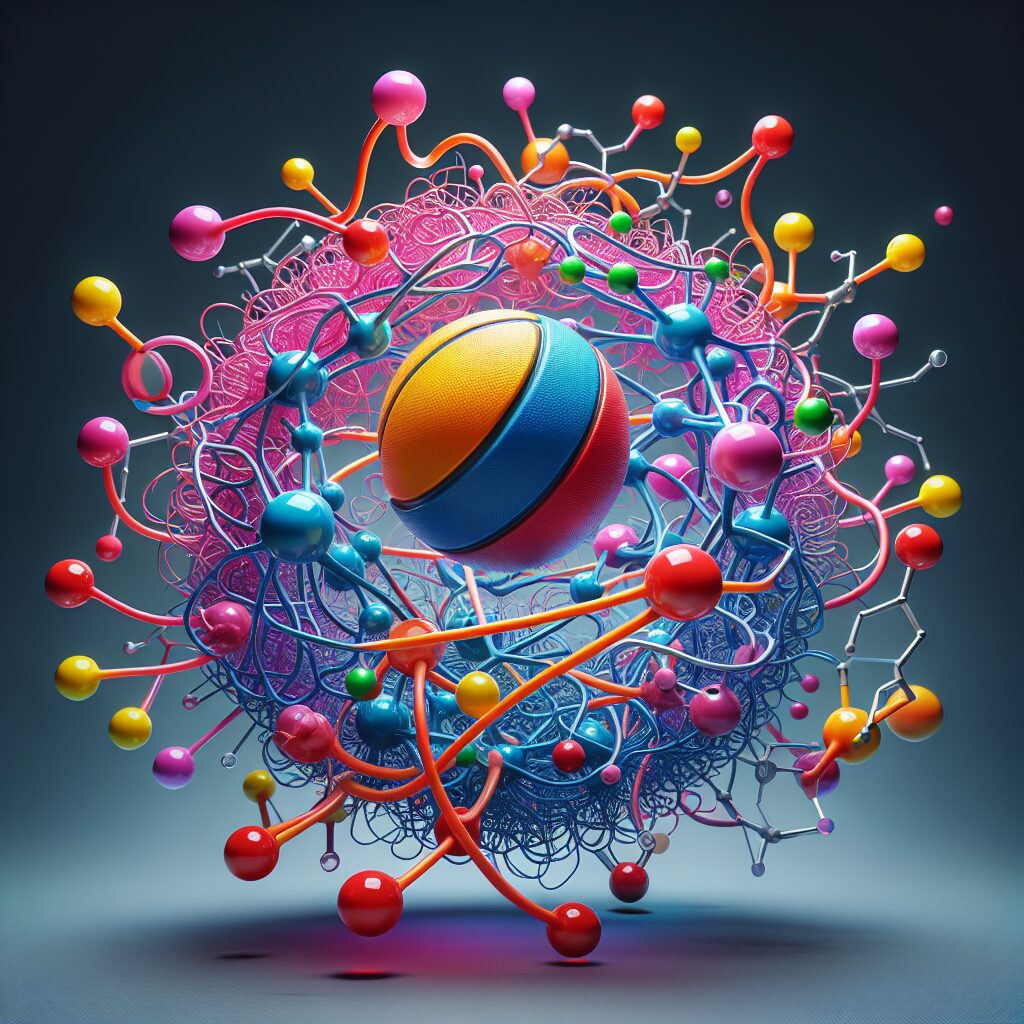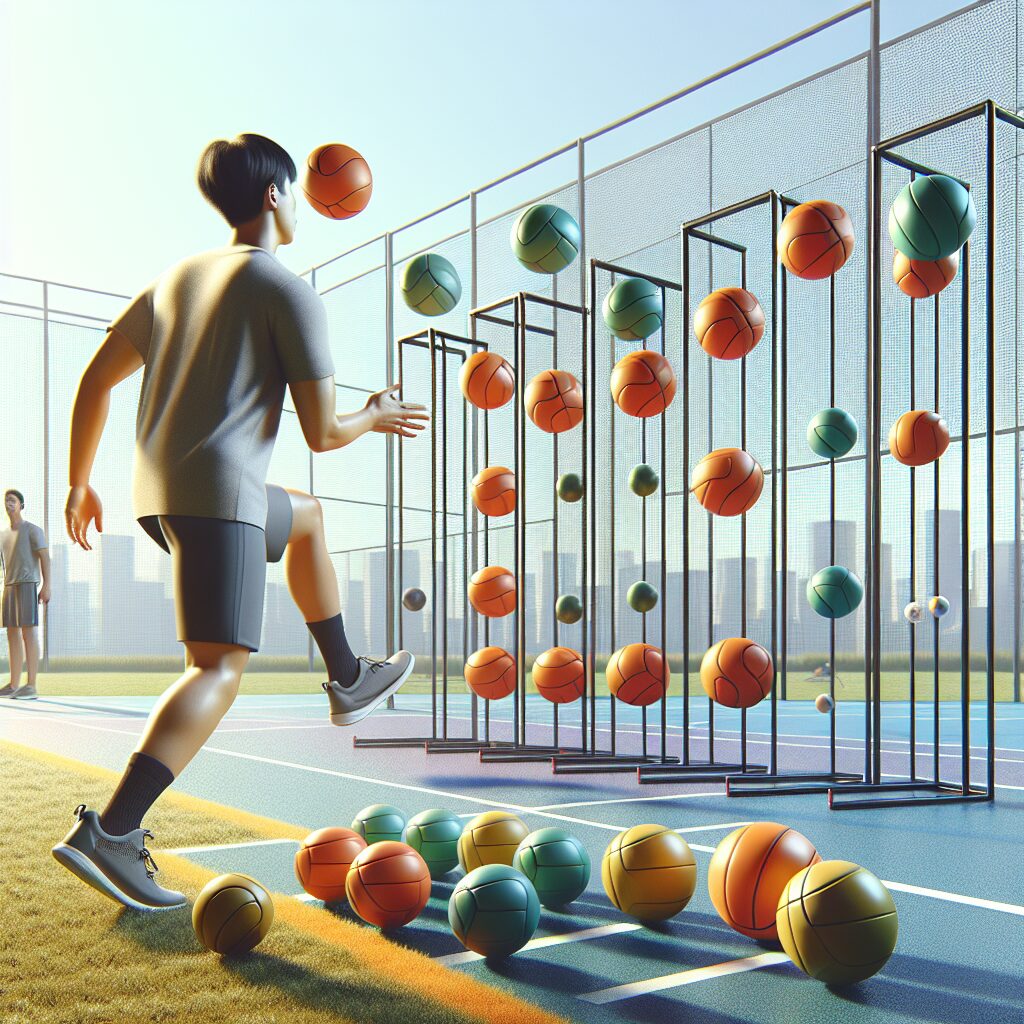Rubber and Ball Performance: The Chemistry of Play
Rubber, a versatile material known for its elasticity and resilience, plays a crucial role in the performance of various sports balls. But have you ever wondered how the chemistry of rubber affects the way we play? Understanding the chemical properties and characteristics of rubber is essential in maximizing ball performance, ensuring durability, and enhancing player experience.
Rubber’s unique ability to stretch and return to its original shape is what makes it an ideal material for sports balls. This elasticity is a result of the long chains of polymers within rubber, which can be stretched and twisted without breaking. Moreover, the chemical bonds between these polymer chains allow for the efficient transfer of energy, contributing to the bouncing and rebounding properties of rubber balls. The composition and molecular structure of the rubber used in different sports balls can greatly impact their performance, such as the speed, control, and trajectory of the ball.
In the following sections, we will delve into the key takeaways related to rubber and ball performance. We will explore the various factors that influence the chemical composition of rubber balls, including the types of polymers used, the addition of additives for desired properties, and the effects of temperature on ball behavior. By understanding these aspects, players, coaches, and enthusiasts will gain valuable insights into how chemistry plays a pivotal role in optimizing ball performance, leading to a more engaging and enjoyable play experience. So let’s dive into the intricacies of rubber and ball chemistry to unlock the secrets behind our favorite sports!
Key Takeaways
1. The chemistry of rubber and ball performance is a complex and fascinating subject, influenced by factors such as polymer composition, crosslinking, and surface properties.
2. Understanding the chemical interactions between rubber and fillers is essential in designing and manufacturing high-performance balls for different sports and activities.
3. The type and amount of fillers added to rubber significantly impact ball properties, such as bounce, grip, and durability.
4. The surface properties of a ball, including its texture and roughness, play a crucial role in its performance, affecting factors like aerodynamics and grip.
5. Ongoing research and technological advancements continue to push the boundaries of rubber and ball performance, enabling the development of innovative materials and designs for enhanced sporting experiences.
What is the Chemistry behind Rubber and Ball Performance in Play?
1. The Science of Rubber
Rubber, derived from latex, has been used for centuries in various industries, including sports. The unique properties of rubber make it an ideal material for producing balls used in a wide range of games and activities.
2. Elasticity and Bounce
Elasticity is a crucial factor in ball performance. Rubber exhibits high elasticity, allowing the ball to deform upon impact and quickly regain its original shape. This property enables the ball to bounce and makes it an excellent choice for games that involve bouncing, such as basketball or tennis.
3. Friction and Grip
The surface of a ball affects its interaction with the playing field and players’ hands. Rubber balls often have a textured surface to enhance grip and maximize friction. This increased friction helps players maintain control over the ball, especially in sports like soccer or volleyball.
4. Durability and Resilience
Rubber is known for its durability and resilience, making it an excellent choice for balls subjected to intense and repetitive impacts during play. The unique chemical composition of rubber allows it to withstand wear and tear, ensuring the ball maintains its performance for an extended period.
5. Weather Resistance
Rubber balls excel in outdoor activities due to their weather resistance. The chemical properties of rubber enable it to withstand extreme temperatures, moisture, and UV radiation, making rubber balls suitable for use in various weather conditions.
6. Impact on Ball Sports
The chemistry behind rubber and ball performance has significantly influenced various ball sports. Understanding the chemical properties of rubber has led to improved ball designs and enhanced gameplay. It has revolutionized sports like golf, tennis, basketball, and many others, allowing athletes to push their limits.
Tips to Optimize Rubber and Ball Performance:
- Properly maintain and clean rubber balls to ensure optimum performance.
- Store rubber balls in a cool and dry place to prevent degradation.
- Check the inflation level of rubber balls regularly to maintain consistent performance.
- Choose the right rubber ball for the specific game or sport you are playing.
- Consider the playing surface and conditions when selecting a rubber ball to optimize its performance.
- Replace worn-out or damaged rubber balls to ensure fairness and safety during play.
- Consult experts or manufacturers for guidance on the best rubber ball for your specific needs.
Frequently Asked Questions
1. How does the chemical composition of rubber affect ball performance?
The chemical composition of rubber plays a crucial role in determining the performance of a ball. Factors such as elasticity, durability, and grip depend on the specific compounds and additives used in the rubber formulation.
2. Can you explain the relationship between ball performance and the elasticity of rubber?
The elasticity of rubber directly affects the bounce and responsiveness of a ball. The greater the elasticity, the higher the bounce and the better the ball’s performance in terms of energy transfer and playability.
3. What role does durability play in the performance of a ball?
Durability is essential in ensuring that a ball can withstand the rigors of play without losing its performance characteristics. A durable ball maintains its shape and properties over time, providing consistent performance in various conditions.
4. How does the chemical composition of rubber impact the grip of a ball?
The chemical composition of rubber significantly influences the grip of a ball. Certain additives, such as tackifiers, can enhance the surface friction of the rubber, allowing for better ball control and handling during play.
5. Are there any environmental considerations regarding the chemistry of rubber and ball production?
Indeed, environmental considerations are essential in rubber and ball production. Manufacturers strive to develop eco-friendly formulations and utilize sustainable practices to reduce the environmental impact of production and disposal.
6. Can you provide examples of common rubber additives used to enhance ball performance?
Common rubber additives used to enhance ball performance include carbon black for added strength and toughness, antioxidants for improved resistance to aging, and vulcanizing agents to enhance the cross-linking of rubber molecules and improve durability.
7. How does temperature affect the performance of rubber balls?
Temperature can significantly impact the performance of rubber balls. Extreme cold or heat can affect the elasticity, bounce, and overall playability of the ball. Manufacturers consider temperature tolerances and design balls to perform optimally within specific temperature ranges.
8. What are some of the safety considerations associated with rubber and ball chemistry?
Safety considerations are important in rubber and ball chemistry. Manufacturers ensure that the materials and additives used in the production of rubber balls comply with safety standards and regulations, minimizing potential hazards during play.
9. How can I choose the right ball for a specific sport or activity?
Choosing the right ball for a specific sport or activity involves considering factors such as size, weight, and specific performance requirements. Manufacturers provide guidelines and recommendations to help individuals select the most suitable ball for their needs.
10. Are there any ongoing research or advancements in rubber and ball chemistry?
Yes, research and advancements in rubber and ball chemistry are ongoing. Scientists and manufacturers continually explore new materials, additives, and production techniques to enhance ball performance, durability, and environmental sustainability.
Final Thoughts
The chemistry of play, as influenced by rubber and ball performance, remains a fascinating area of study and innovation. Understanding the intricate relationship between chemical composition, durability, elasticity, and grip enables the development of balls that enhance the excitement and enjoyment of various sports and recreational activities.
As we continue to explore the potential of rubber and the chemistry behind it, the future holds promising advancements in ball performance. Research and development will undoubtedly lead to improved materials, more environmentally friendly production methods, and even better playing experiences. So next time you pick up a ball, take a moment to appreciate the science and chemistry that bring it to life.




